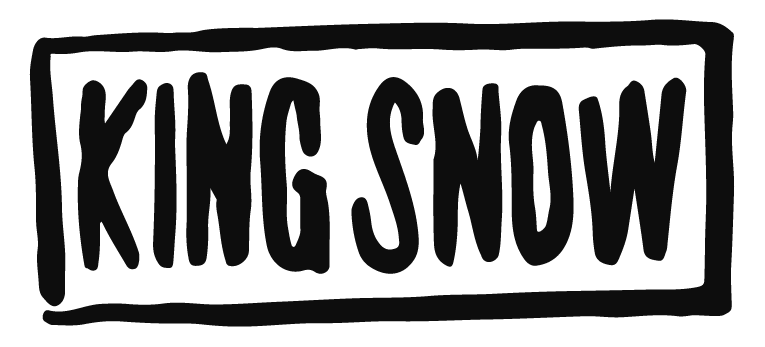NERD: Akasha Weisgarber of Hightide Mfg.

SNOWBOARD NERD: Akasha Weisgarber of Hightide Mfg.
Passion > Production
By Jesse Fox
Constant pursuit to make things better is human nature. Us beings never spend extended periods of time being comfortable—comfort eventually feels stagnate and change is the only option. Whatever it is, it can always be different, superior, and we always want it to feel new. It’s fair to say Akasha Weisgarber’s nerd-like passion for product and design was natural instinct, “being in-tune with the equipment.” Akasha says, “I was always wishing I could tweak the boards and build them exactly how I wanted them to ride.” The inner nerd took hold.
In the early 2000s Akasha was an admitted snowboard-bum, riding 100-plus days a year and helping test boards in Whistler for Johnny “Q” and Alex Warburton (two design legends responsible for creating some of the world’s best boards and bindings over the last two decades). After a few years, he decided to migrate to Australia for school. “I wanted to travel and wanted to learn AutoCAD,” Akasha says. “The best I came come up with was taking a student loan and heading to Australia to surf while taking architectural technology.”
His perfect plan, “I went to school for eight months at a time so I could still spend winters back home snowboarding.” While Down Under in 2010, he drew his first commissioned board, the DC Ply. Akasha soon went on to design other models for DC, shapes for Stepchild, and help revamp the entire YES snowboard line.
The next step was to make boards for himself.
“It was a whim,” Akasha explains. “I had these ideas that I wanted to produce and ride. Gabe Langlois helped to make that happen.” Gabe is one of Akasha’s partners in the Tide. A fellow shred nerd that spends his spare time smashing pow with the strongest of Whistler locals and his working days behind a camera, documenting the shredding of legends like, Travis Rice and Jake Blauvelt.
“He and I built some prototype boards that turned out to ride really well...” Akasha adds, “and they didn’t fall apart [laughs], so we decided to start this small company.”
A jaded snowboard industry journeyman may scoff at the ambition of bringing another brand into a struggling market, but their product validated the motivation. “If the boards weren’t good to begin with, we wouldn’t have pushed into it,” he explains. “From the beginning, people were stoked on the boards. So okay, this makes sense.” And through authentic media mentions and word-of-mouth, the Tide started to rise. “People are stoked on the product and brand, our image. They’re stoked it’s a small company and we’re grinding it from the ground up.”
For Akasha, Hightide comes back to satisfying the original drive for progression and he’s at a place to do that now. “It takes money to build boards, but we’re at a point where we can design anything we want.”
Twins make up only 2.8% of the world’s population but completely saturate the snowboard market. Akasha’s boards draw more inspiration from surfing. “The look of resin tints and epoxy,” he says. “That’s taken directly from surfing. Some of the shapes, how much surface the boards have, I’ve played around with those for years.”
The surf quiver is expanding into snowboarding. Boards are dictating riding styles in changing conditions or locations and ultimately making snowboarding feel new again. His experience is inspiration for the boards he makes, “being in the mountains, riding the boards I’ve built and wanting to tweak them.” Akasha’s relentless nerd speaks, “Every year you want to build something new, ride something different.”
Akasha’s small ocean is rising and his humble ambitions are sustainable, “We want to put more product and shapes out there,” he says. “Grow to the point where it’s a full-time job and commit 100 per cent of our time and energy towards it.”
The perfect life sandwich has layers of passion, career, and lifestyle. “I want to be snowboarding in the winters and surfing in the summers and helping running Hightide; make it successful... continue the life. Why not?” Eat the sandwich, live the dream.
TOP 5: All-Time Board Shapes
WINTERSTICK ROUNDTAIL
Every time I see one I’m blown away at how sick that board was with its built-in grip bumps and functional pow surfing shape that was made in the ’70s, way before snowboarding was even a thing. The composite construction was a decade ahead of its time. Everyone else was making simple plywood boards into the ’80s. Dimitrije Milovich deserves way more attention as a pioneer of our sport.
BURTON CRAIG KELLY
The first one with the red, yellow, and black graphic was the catalyst to modern snowboard design. It had a twin quadratic sidecut with a deeper sidecut than other boards in that era, allowing more aggressive turns and better switch riding. Previous to this most boards had tapered tails with sidecuts that barely existed like the skis of that time.
BARFOOT JON BOYER
The original was such a sick shape for that time... the first true twin-tip board with a pulled-in blunt shape.
LIB TECH EMMA PEEL
The first board I rode with a really deep sidecut, and loved how responsive that board was... it opened my mind to how much sidecut plays a role in board design.
BURTON MALOLO
Burton was the first major brand to go back to tapered powder boards with the Fish, which I didn’t really like for lack of tail to Ollie off of and land on. The next year they came out with the Malolo, which blew me away how well it rode in powder but still was able to ride like a freestyle board. It opened me up to wanting a quiver whereas before I wanted to be in tune with one board for everything.


